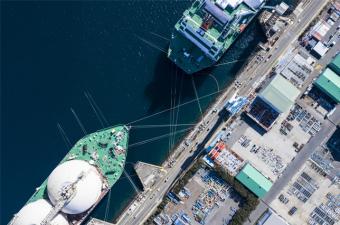
OVERVIEW
First instance decision of Teare J upheld in first appeal on liability in ship collision to reach Court of Appeal since 2004
The container carrier EVER SMART (ES) and VLCC ALEXANDRA 1 (A1) collided at the mouth of the exit channel from Jebel Ali in the small hours of 11 February 2015. ES was outbound and A1 was waiting in the pilot boarding area to embark the pilot who had just left ES. Both vessels were found guilty by the first instance judge (at [2017] EWHC 453 (Admlty)) of poor lookout: ES in failing properly to observe A1; and A1 in failing to listen properly to a VHF conversation involving a third vessel, with the result that A1 ended up crossing the line of the channel in front of ES, supposing (wrongly) that ES was planning to turn to port.
The central issue on the appeal was whether the crossing rules (rules 15-17 of the Collisions Regulations (“ColRegs”) applied to the vessels’ encounter. If they did, ES was the stand-on and A1 the give-way vessel. The judge held, and the Court of Appeal (at [2018] EWCA Civ 2173) agreed, that they did not apply. That was because –
- ES was subject to the narrow channel rule (ColReg rule 9) applied to ES and required that she keep to the starboard side of the channel.
- That requirement is not the same as the requirement under rule 17 that the stand-on vessel maintain its course and speed.
- ES was out of its water at the start of the vessels’ encounter, having been allowed to drift to port of the centre line while dropping the pilot. It was thus obliged to move to starboard under rule 9 and, if rule 17 applied, to maintain its course and speed.
The Appellant ES interests argued – and the Court of Appeal accepted ([63]) – that the requirement on the stand-on vessel is not to be interpreted literally or unthinkingly, but rejected the submission that there was no risk of inconsistent action being required by the two rules. That being so, the two rules could not both apply and so rule 9 displaced rule 15.
Even if that was wrong, the Court upheld the judge’s finding that the vessels were not crossing, because A1 was not on a course (even though she was making way over the ground and the two vessels remained on a constant bearing throughout their encounter) but waiting for a pilot. Thus the crossing rules did not apply in any event.
The Court also rejected the Appellant’s argument that the judge had misdirected himself on apportionment. Here the issue concerned the proper treatment of the greater (and, as he held, unsafe) speed of ES in terms of causative potency: having held that there was not much to choose between the two vessels in terms of bringing about the collision, he “dialled up” the responsibility of ES because her higher speed was liable to do more damage. That, said the Court, was correct in principle. The guidance of Teare J. in the earlier case of The Nordlake [2016] 2 All ER (Comm) 449 was expressly approved (at [123]).
Finally, the Court dismissed A1’s cross-appeal. A1 sought to argue that – even if the crossing rules did not apply – it did not have to give way, because it was picking up a pilot, or a “vessel constrained in her ability to manoeuvre” within the meaning of ColReg rule 18.
The decision therefore provides important guidance on –
- The interplay between the crossing and narrow channel rules; and
- The correct approach to apportionment, particularly as regards the treatment of excessive speed.
Nigel Jacobs QC and James M. Turner QC appeared for the Appellant.


